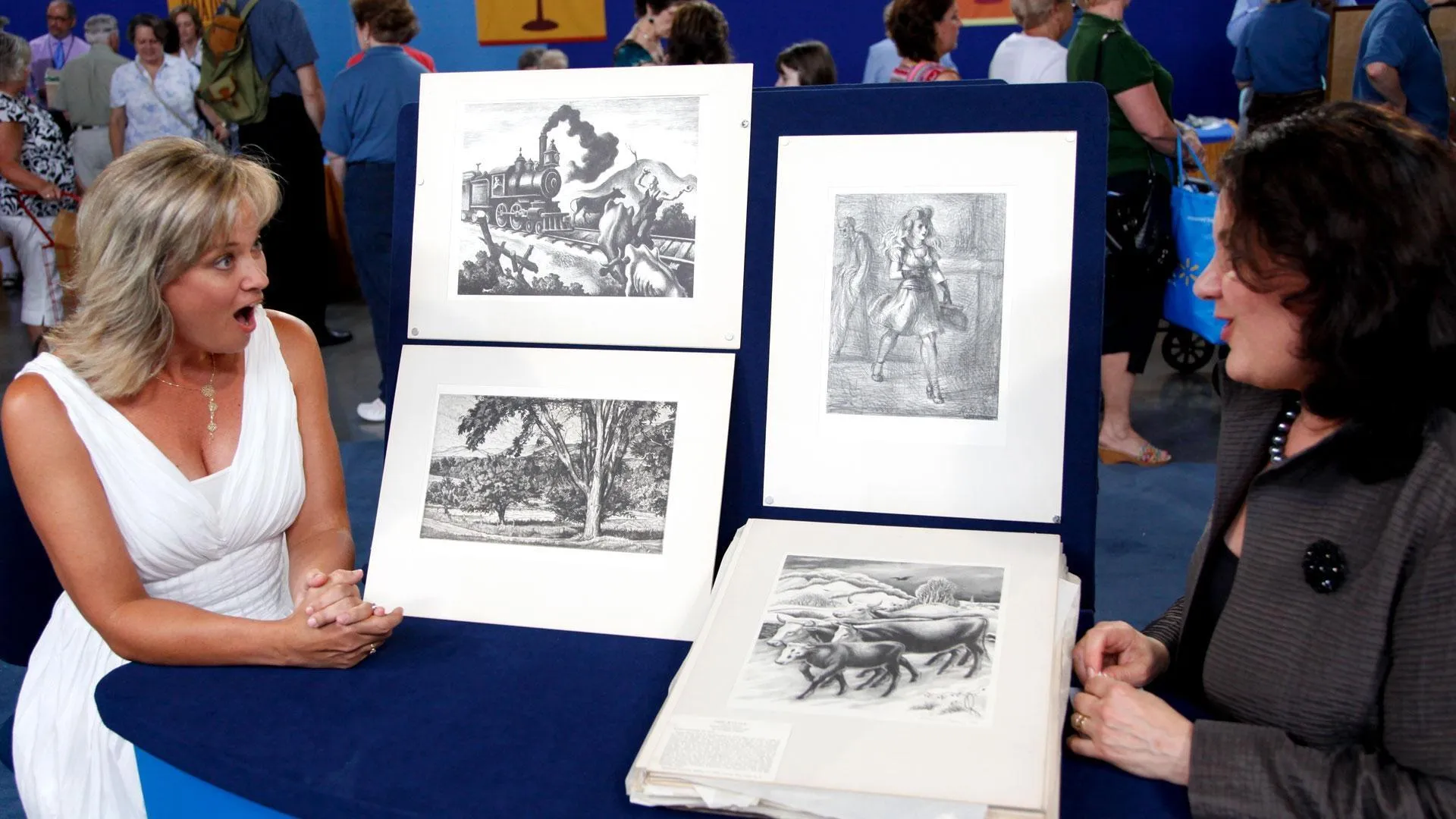GUEST: I go around to different antique stores and salvage places. And I ran upon this lady in Georgetown, and she had this for sale. And I fell in love. She wanted more money than I had on me.
APPRAISER: How much did she want for it?
GUEST: Two hundred and fifty dollars.
APPRAISER: All right.
GUEST: And I asked her, would she consider letting me put it on layaway? I paid $125 down, and $125 a month later.
APPRAISER: You know, there's a mark on the bottom.
GUEST: I do.
APPRAISER: And I'm sure you looked up the mark.
GUEST: I tried.
APPRAISER: All right. The mark says "Rosenthal." The Rosenthal factory is located in Selb, in Bavaria, Southern Germany. And it's a well-known Bavarian porcelain and pottery-making company. In fact, they specialize in porcelain, although this is made of pottery. It's made of earthenware. And when this was made, they made very high quality sculptural and artistic ware. It's a centerpiece, really. It's designed to be filled with flowers in the flower frog.
GUEST: I see.
APPRAISER: There's a second signature on the piece. Did you see that?
GUEST: No.
APPRAISER: Just here is another signature.
GUEST: I've owned it ten years, and I have never noticed that.
APPRAISER: Well, it's kind of faint. The sculptural modeling ware of Rosenthal and other European porcelain manufacturers of this time is often signed, because they would hire modelers, some of whom worked exclusively for one factory. But most of them, like this guy, whose name was Ferdinand Liebermann, worked for other companies as well. But he's most closely associated with Rosenthal. And Liebermann was a great modeler who started at Rosenthal about 100 years ago, and worked through the teens and the '20s.
GUEST: I see.
APPRAISER: This particular piece was probably made in the 1920s, I think. And we can tell that by the coloration, the glaze colors, and the modeling in general, and to a certain extent, the mark. It has a very unusual, and I think very appealing glaze to it, this sort of muted coloration. It's two pieces, by the way. I'm going to pick this up and show it. There's the mark. I would call him a faun, and a goose. Now, I showed it to a couple of my colleagues, all of whom loved it, by the way.
GUEST: Good.
APPRAISER: We'd never seen anything quite like it before. I think today in a good antique shop, it's a $2,000 item. The quality is beautiful, and the condition is excellent.
GUEST: Thank you. I appreciate it.
APPRAISER: You're welcome.



